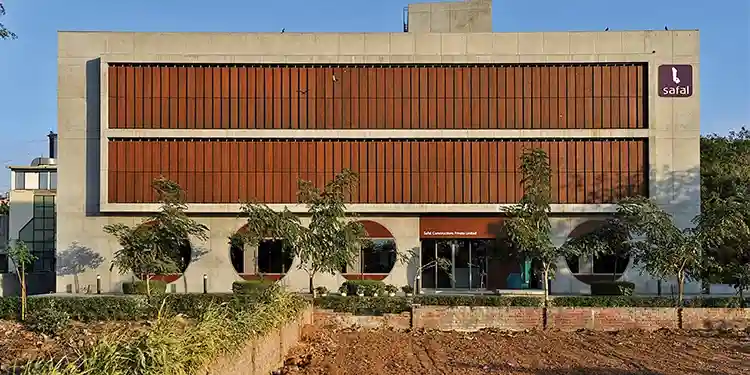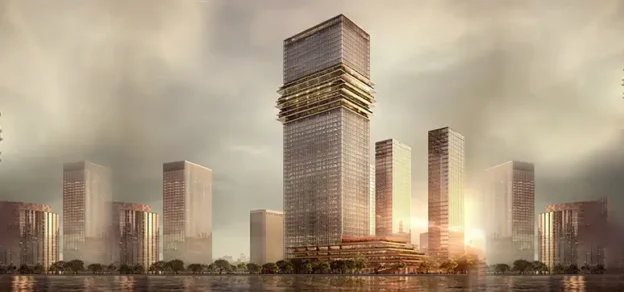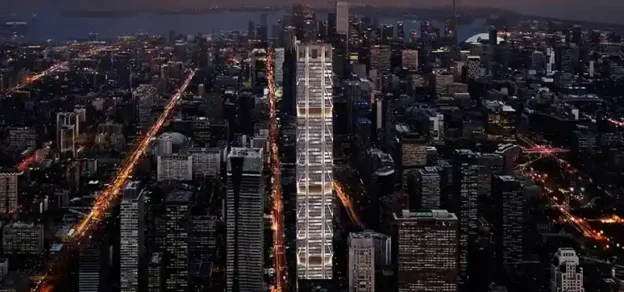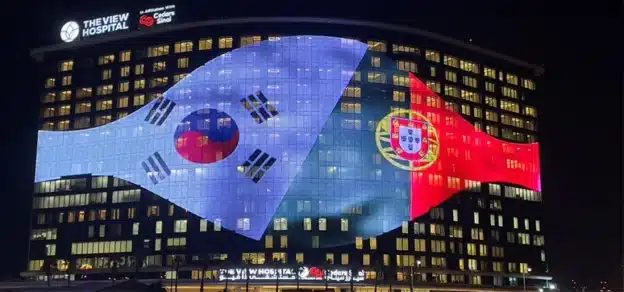Historically, architects the world over have employed various shading devices and strategies to control the environment within buildings, particularly when designing for hot-arid or hot-humid climates. From the jaalis, jharokhas and chajjas of traditional Indian architecture to the brise soleil of modernists like Le Corbusier, shading devices on buildings are everywhere in our cities and towns.
In recent times, however, with the growing pressure on land in urban areas and rising real estate prices, deep overhangs on the perimeter of buildings have gradually been edged out by wafer thin façade systems that allow the builder to maximize usable floor space. This is true particularly for speculative buildings. This often means that indoor spaces are left “unprotected” and more vulnerable to extremes of heat and cold, and in our context, need to be cooled artificially all year round. This is normally done using energy intensive methods like air conditioning.
As the awareness of environmental issues and the concern for conserving energy increases, there is a growing interest in passive climate control and passive cooling of buildings. Architects in India have been experimenting with passive cooling strategies, but these have mainly been used in residential and institutional buildings and with limited success. Large scale commercial buildings in urban areas have remained unabashed energy guzzlers.
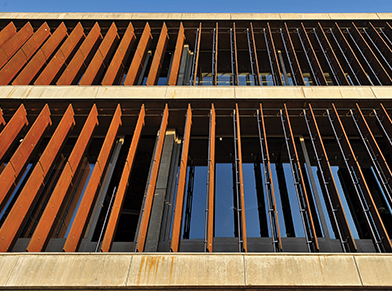
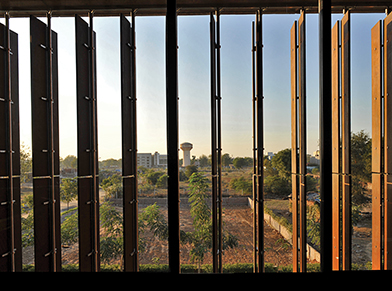
What would be the right strategy to make modern day commercial buildings more energy efficient without compromising on aesthetics, utility or saleability? This was the question that FACE set
out to answer when they developed the first shading
system in 2009. Engineers and designers at FACE worked closely with the architects (HCPDPM Pvt. Ltd.) and product designer (Dinesh Sharma) to develop a range of exterior shading systems for
buildings. These systems are compact, easy to install and manually operable to maximize daylight and minimize heat gain. The first project completed was Safal Profitaire in Ahmedabad in 2010. The two projects presented here are Safal Corporate House and D&C Kairos in Ahmedabad.
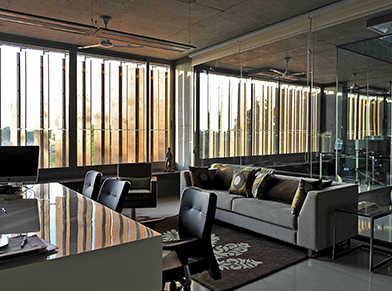
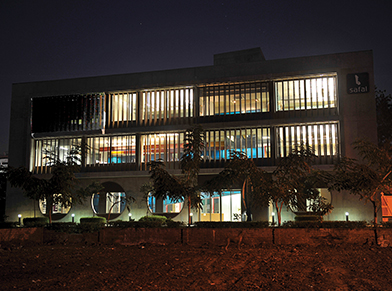
Safal Corporate House, Ahmedabad
The shading system used for Safal Corporate House is the Vertical Rigid Louver System (VRLS) staggered. The system uses staggered 19mm thick marine plywood panels on a stainless steel structure. The façade on which the louver system is mounted is west facing. The staggered and overlapping panels ensure that no direct sunlight hits the glass when the louvers are closed (usually in the afternoon) but there is sufficient diffused daylight to make artificial lighting unnecessary throughout the day. The system is manually operated, and the occupants of the building can change the angle of the louvers to get maximum protection from
direct sunlight at different times of the day.
D&C Kairos, Ahmedabad
The Horizontal Rigid Louver System (HRLS) has been used at D&C Kairos. This is a compact system and can be mounted within a projection of only 150mm outside the window or glazing area. The horizontal louvers, when fully open, allow an uninterrupted view equal to the width of the opening. Here too, when the louvers are closed, no direct sunlight hits the glass, but the overlapping louvers allow sufficient diffused light into the building. The louver panels are made from 9mm thick cement bonded fibre-board and the structure is aluminium and stainless steel.
Exterior shading systems on commercial buildings are now commonplace in Ahmedabad – in a short span of five years! Builders have recognized the dual advantage of the aesthetic appeal of such a façade and long-term savings for the buyer, and are able to use these as selling points on their projects.
However, a word of caution is needed here. Increasingly, these systems are being used as ornamentation on building façades with complete disregard for their function of increasing the energy efficiency of the building. This defeats the primary purpose of having such a system! A static decorative screen outside the glass may provide some protection from direct heat gain, but for optimum benefit at different times of the day and during different seasons, it is essential that the shading system be movable. The type of material used in the shading system and its efficacy in reducing heat gain cannot be disregarded or treated casually either. An effective shading system must be designed and tested for efficacy.
The shading system installed on a building façade, invariably becomes a key element of the building’s architecture. The design of the system therefore, needs to lend itself to customization. It must be able to adapt to a different architectural language with each project. This is a function that shading systems fulfill remarkably well. Each project’s requirements are unique and the team at FACE prefers to get involved in the project as early in the design process as possible. They work together with the client and the architect and sometimes the interior designer to ensure a perfect “fit” in terms of design, utility, access and even long term care and maintenance of the system. The shading systems developed by FACE are entirely made in India for Indian conditions and have been tested in the field over the past several years.
